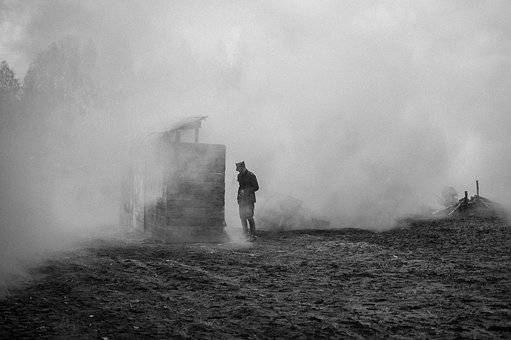The estimated death rate during the World War 1 was 7 million civilians and 9 million combatants. Thus bringing an end to the empires of Germany, Ottoman, Russia, and Astro-Hungarian. While regular deaths were common in the battleground, many were recorded from diseases during WW1. 113,000 died of disease in the British army, while among the German troops, the number was 155,013.
The number was less in terms of the other wars before, and that calls for multiple reasons.
- There were successful vaccinations against typhoid and smallpox.
- Also, by now, the army is more aware of bacterial infections. They know how to care for base camps by cleaning toilets and using water filtration techniques. Thus bringing control over diarrheal diseases and dysenteric epidemics.
- The period also saw a rise in research and disease control techniques, where researchers like Alexander Fleming spent his war days discovering wound infections. The focus was to elaborate on the wound infection that has taken over the Boulogne Casino (France).
However, new World War 1 disease deaths were reported at the army camps, and the cause behind them was far from similar to the early pathogens.

Deadly Diseases During World War 1
The trench life introduced the army to extra protection from opposing forces. Little did they know that this time there was something else besides them acting as the cause of mass epidemics and other diseases during ww1.
The Trench Fever
Shaving the head and the mustache helped soldiers get rid of the headlouse, but the body louse continued to hide away in the folds of their dresses. The particular only came out when it was time to feed. Further adding more difficulty to the situation was the cold outside, which prevented the army men from shedding their clothes to sanitize.
The situation did continue, and there was no sign of an epidemic on the Western Front. However, the condition became severe among the Austrian and Serbian troops (Eastern Front) by 1915.
“Trench Fever” became a contagious disease during World War 1. Rickettsia quintana’s (body louse), which was still now known for causing the epidemic typhus, now had taken a different form.
The infected feces of the Rickettsia quintana (body louse) got forced inside the skin as soldiers scratched their bodies to eliminate the irritation caused by lice bites. The infected soldier did not show any signs in the first few weeks. But after a few weeks, there were severe head-ache and debilitating muscle pains. Characteristically of the shins, named “trench fever” as “Shin-bone Fever” Within five days, there was no sign of the fever, which reoccurred after a few days.
There was no fixed treatment or the same, as modern-day antibiotics were yet to be discovered. Around 80% of the soldiers remained infected and unfit for approximately 3 months.
Trench Mouth
You must be wondering, “What was the most common disease in ww1?” Well, till then, let’s introduce you to another, the “Trench Mouth.” Also known as “ Acute Necrotizing Ulcerative Gingivitis,” it was triggered by the malign overgrowth of Bacillis fusiformis (mouth-dwelling bacteria) and Borrelia vincentii (spirochaetes).
Soldiers, irrespective of age, suffered from bad breath, bleeding, slogging, and ulceration in the gum membrane. The situation was so painful that soldiers found eating, swallowing, or talking difficult.
The primary mode of the trigger was heavy smoking, emotional/physical stress, and poor oral hygiene.
Influenza
This one saw the highest peak among the deadly diseases during WW1. From March 1918, Influenza began to spread across USA, Europe, and Asia. With exceptional mortality rates, the victims this time were civilians as well. Influenza death was common among young adults aged 20-40 years. Among many, the disease shifted from casual Influenza to dangerous pneumonia.
As per USA military reports, 46,992 soldiers’ cause of death was respiratory diseases. Face masks and other measures to prevent the spread of this dreadful disease were typically unsuccessful.
Diseases During WW1 And The Modern World
Trench fever is still common among the homeless and those in unhygienic conditions. Mostly found among inmates, healthcare workers, and those spending days in refugee camps. Doctors at present treat the same with aspirin or acetaminophen. Also, the patients are advised not to scratch the rash and stay hydrated all day.
0.5% of the population is still vulnerable to trench mouth, mostly aged between 18 and 20. It is common among people who do not have access to adequate dental care. Also, people already infected with HIV are prone to the same. Doctors use ultrasonic instruments to clean the mouth with chemicals besides prescribing painkillers and antibiotics.
Influenza comes in multiple forms, A, B, C, and D, with various subtypes. Doctors prescribe adequate medicines based on the severity of the same. Also, Rapid influenza diagnostic test techniques are used to monitor the same. Modern medical science takes adequate measures trying to combat the same.
Recently, the COVID-19 Pandemic saw multiple people give up on their life, and the world is still recovering from those days.
If you are interested to know more about World War-related history and the changes to society, it brought, consider reading about World War 2 And Marriage, Fashion and World War 2 and Nazi Racism And The Pure German Blood.



